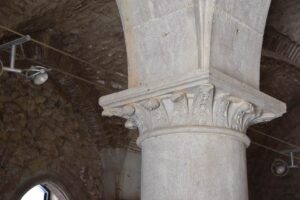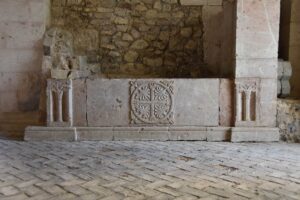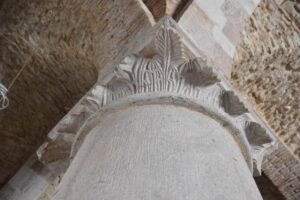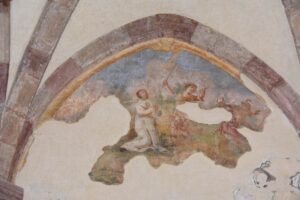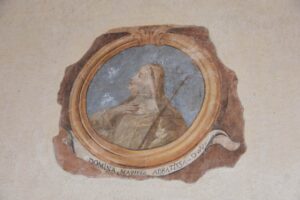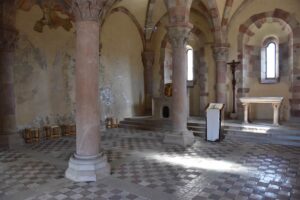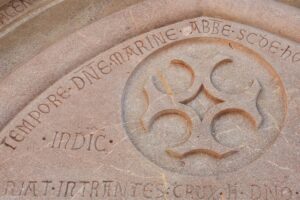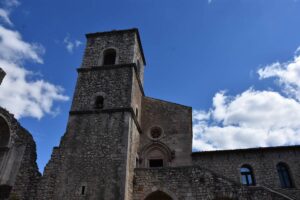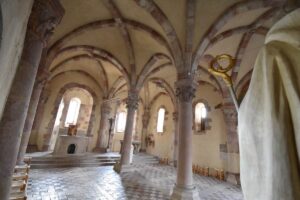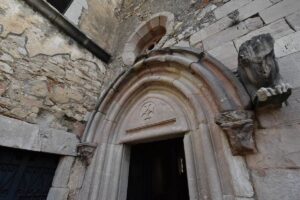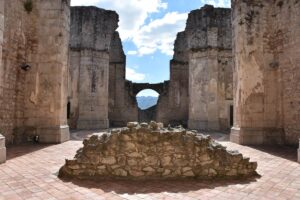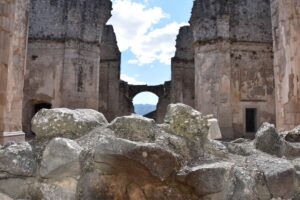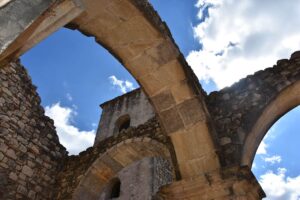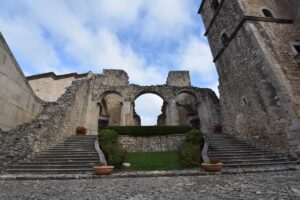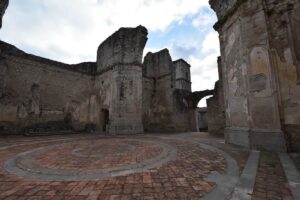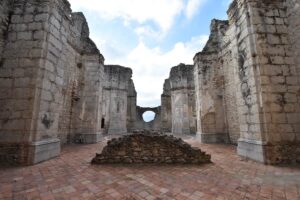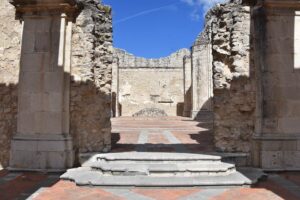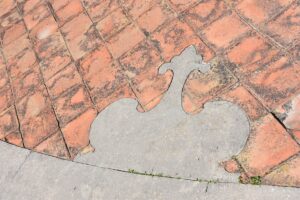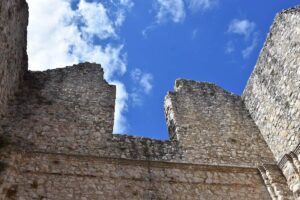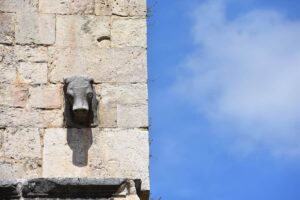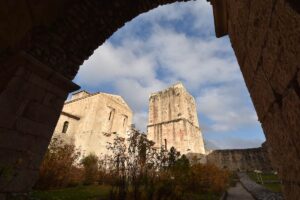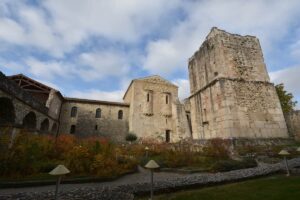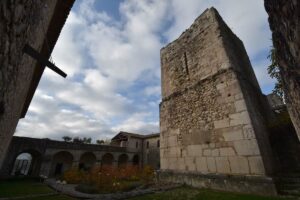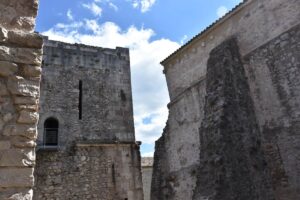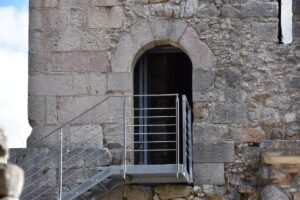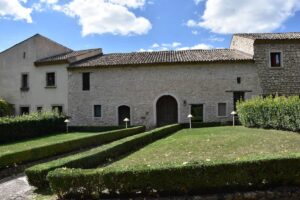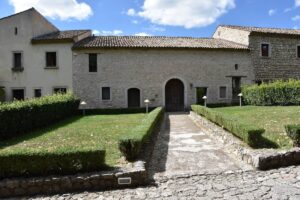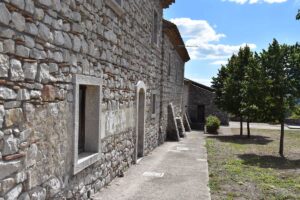Guided Tour
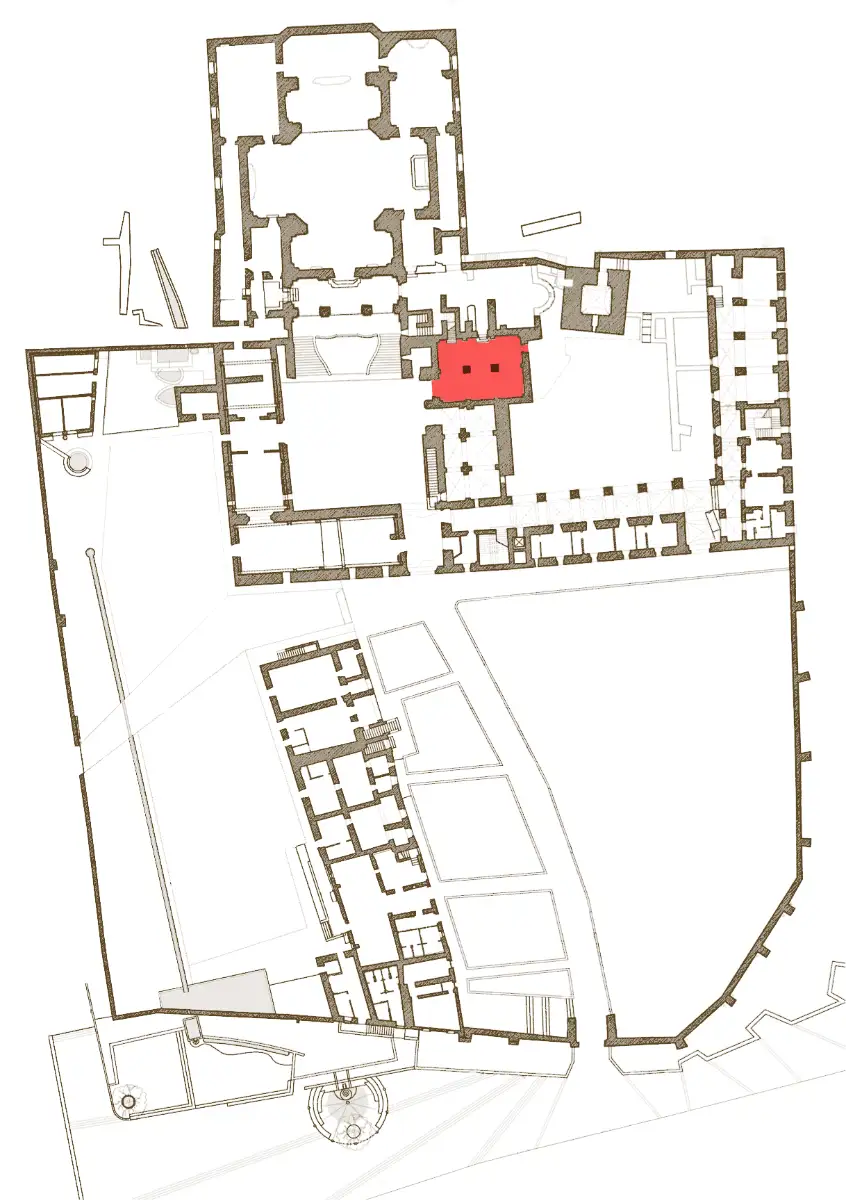
The Lower Atrium
Today, in the center of the monasstc complex, two medieval environments are preserved superimposed, which mark the transiston between Romanesque and Gothic art.
The lower atrium, in the past also called the lower church or Funerary chapel, has two bays, separated by two monolithic columns that they end with low capitals from which the arches that support the cross start and they reach the semi-columns emerging from the side walls.
It had the function, confirmed by the presence of five different doors, a sorting place for access to the various areas of the monastery, such as the primitive Church of the Savior, the women’s monastery and the small cemetery of the nuns.
This place was typical of many Benedictine monasteries and was sometimes called Galilee, others Paradise.
Of note, next to the entrance portal, a beautiful Roman funerary sculpture, depicting a matron, which dates back to the Augustan period, while inside, the sepulchral ark, finely made of local red stone, is particularly interesAng carved and the side door, in Gothic style, which leads into the space where the remains of the ancient Church of the Savior.
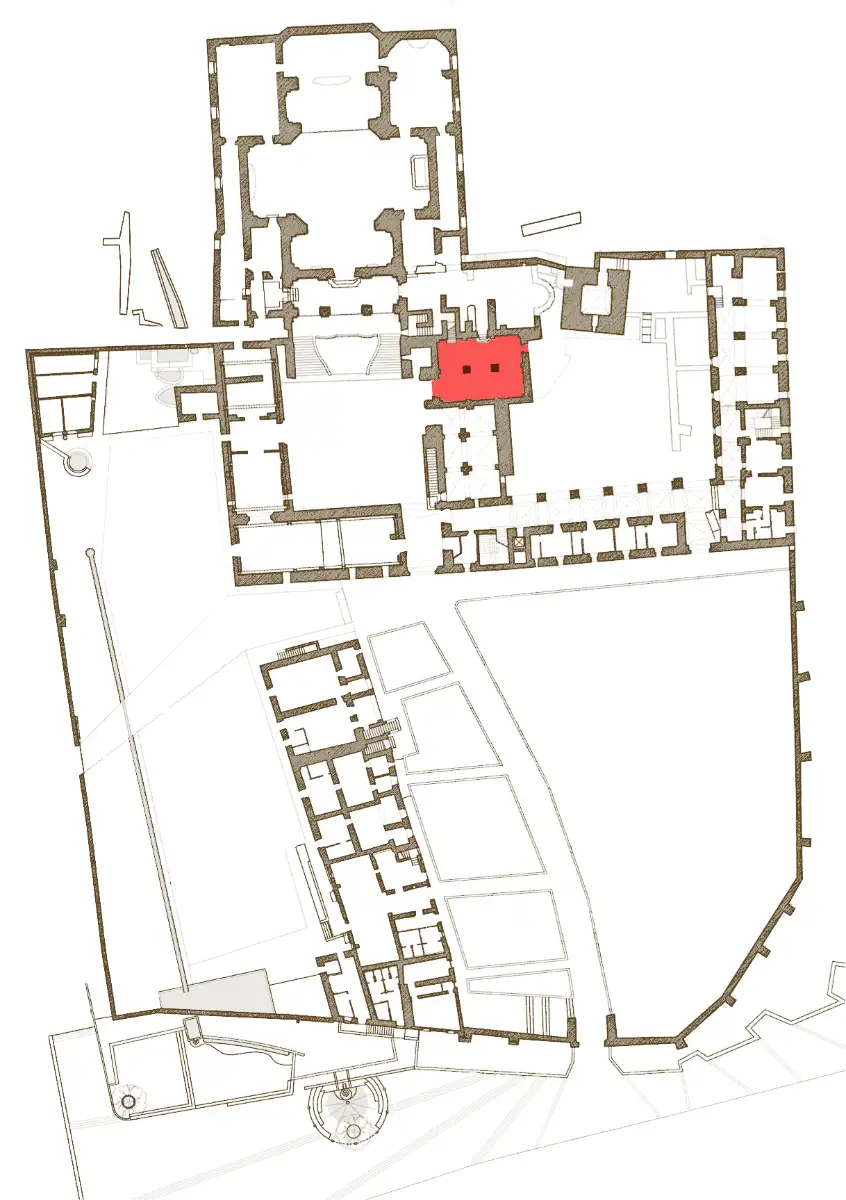
Chapel of San Luca
It is the jewel of the abbey. It can be reached by an external staircase whose parapet ends with a snake- shaped handrail with a pommel in its mouth.
The access portal is surmounted by a pointed arch and a small rose window a six lights. On the front of the arch some writings remind us that the church was built by Marina II, in 1255, to welcome the remains of San Luca. The interior is built by a small room with two naves covered by ogival crosses, which rest on two central columns and ten half columns immersed in the perimeter walls. The basics octagonal columns and capitals decorated with curved leaves, on two orders asymmetrical, they recall – according to many scholars – the residence built by Federico II in Castel del Monte, in Puglia.
Outside, the structure is completed by two small apses supported by shelves and, all around the walls, barbican with animal heads and ornamental motifs. Of the numerous seventeenth-century frescoes that enriched the church, only two remain medallions depicting the abbesses Scholastica and Marina, and some episodes of the life of San Guglielmo.
The altars are valuable, especially the one made up of a slab of stone supported by four small columns equipped with elegant capitals and all bases different from each other. The well-blended plurality of different artistic forms, the Gothic-Apulian architecture, the Cistercian forms, make the chapel of San Luca one of the most precious monuments of Southern Italy.
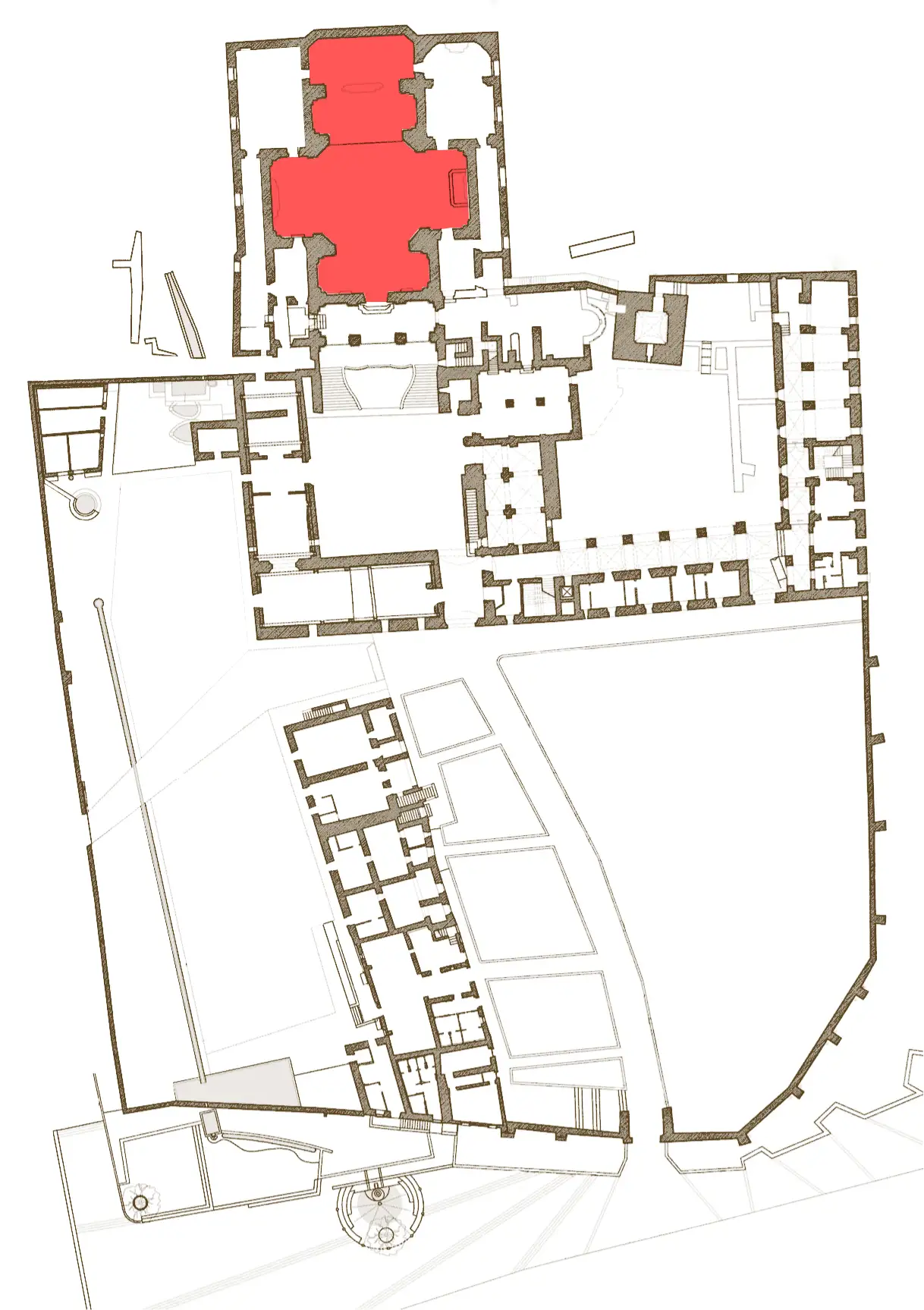
The church of Vaccaro
It takes its name from the great Neapolitan architect Domenico Antonio Vaccaro, who the built between 1735 and 1745. Although today it lacks the roof and other important parts, nevertheless it retains an incredible charm. The plan is a Greek cross, surmounted – in origin – from a central dome.
Inside, only a few stuccos have been saved, while it can be admired throughout the design of the floor, recently restored, is beautiful. The adjacent rooms, once intended for the sacristy and a cappella of the Blessed Sacrament, were recently restored and will be destined to house an Opera museum.

The Febronia tower
It takes its name from the Abbess who in 1152 ordered its construcAon for defense of the monastery. True masterpiece of Romanesque art, it presents numerous set pieces blocks with bas-reliefs from a Roman mausoleum dedicated to Mark Paccio Marcello.
The tower had two floors and, on the second, it was accessed via a bridge drawbridge. In the upper part there are some symbolic sculptures, characterisAcs of Romanesque art.

Farmhouses
From 1807 to 1973 the monastery remained abandoned and some appeals for the recovery of the venerated monument were in vain. So anyone could steal portals and stones, roofs and walls collapsed, brambles became undisputed masters together with animals of all kinds. Only the farmhouses of the peasants continued their life secular.







